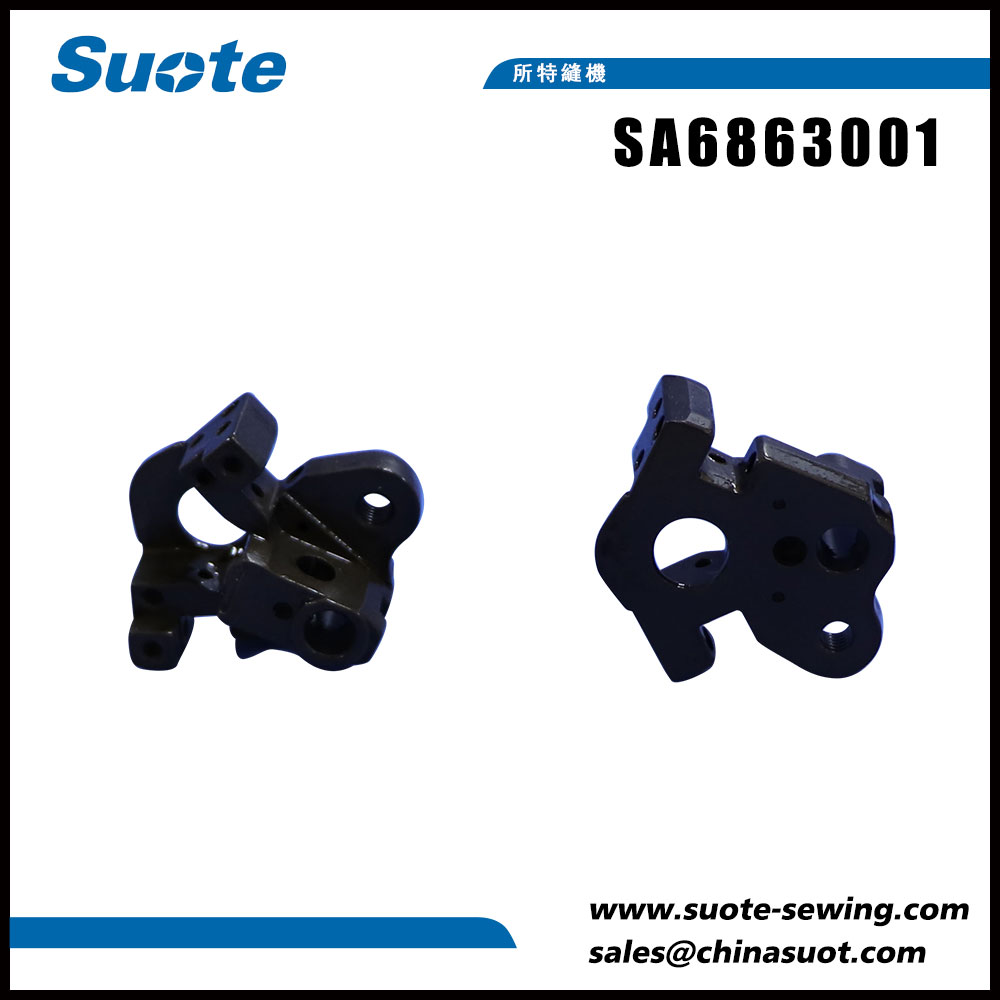Maintaining Optimal Performance: Maintenance Requirements and Best Practices for the LS Holder Base of the 9820 Industrial Sewing Machine
2024-07-09
Ensuring the reliable performance of the 9820 Industrial Sewing Machine involves regular maintenance of its critical components, including the LS Holder Base. This blog explores the maintenance requirements and best practices specifically for the LS Holder Base, highlighting essential steps to uphold its functionality and prolong the machine's operational lifespan.
Importance of Maintenance for the LS Holder Base
The LS Holder Base plays a crucial role in stabilizing and supporting the looper shaft assembly within the sewing machine. Proper maintenance not only enhances the longevity of this component but also contributes to consistent stitching quality and overall machine reliability.
Maintenance Requirements
1. Regular Cleaning:
- Why: Dust, lint, and debris can accumulate around the LS Holder Base, potentially affecting its alignment and performance.
- Best Practice: Clean the LS Holder Base and surrounding areas regularly using a soft brush or compressed air. Ensure thorough cleaning to prevent buildup that could interfere with the looper shaft's movement.
2. Lubrication:
- Why: Lubrication is essential for reducing friction and wear between moving parts of the LS Holder Base and the looper shaft assembly.
- Best Practice: Follow the manufacturer's recommendations for lubrication intervals and types of lubricants suitable for the LS Holder Base. Apply lubricant sparingly and wipe off excess to prevent accumulation of dirt and debris.
3. Inspection for Wear and Damage:
- Why: Continuous operation can lead to wear on components of the LS Holder Base, affecting its alignment and stability.
- Best Practice: Regularly inspect the LS Holder Base for signs of wear, such as scratches, dents, or misalignment. Replace any damaged parts promptly to prevent further deterioration and maintain optimal performance.
4. Alignment Check:
- Why: Proper alignment of the LS Holder Base ensures that the looper shaft assembly functions smoothly and accurately during sewing.
- Best Practice: Periodically check the alignment of the LS Holder Base according to the manufacturer's specifications. Use precision measuring tools to verify alignment and make adjustments as necessary to ensure precise stitching outcomes.
5. Environmental Considerations:
- Why: Environmental factors such as temperature and humidity can impact the performance of the LS Holder Base and the sewing machine overall.
- Best Practice: Store the sewing machine in a clean, dry environment away from direct sunlight and extreme temperatures. Maintain stable environmental conditions to prevent corrosion and mechanical issues.
Best Practices for Optimal Performance
1. Documentation and Record-Keeping:
- Maintain a maintenance log for the LS Holder Base, documenting cleaning, lubrication, inspections, and any repairs or adjustments made.
- Track the frequency of maintenance tasks to ensure consistency and identify any patterns or issues that may require attention.
2. Operator Training:
- Provide training to operators on proper handling and care of the LS Holder Base.
- Educate operators on the importance of regular maintenance and how it contributes to overall machine performance and product quality.
3. Scheduled Maintenance Routine:
- Implement a scheduled maintenance routine for the entire sewing machine, including specific tasks for the LS Holder Base.
- Adhere to the manufacturer's recommended maintenance schedule to prevent unexpected downtime and maintain productivity.
4. Consultation with Experts:
- Seek guidance from qualified technicians or manufacturer support for complex maintenance tasks or troubleshooting.
- Utilize their expertise to address any concerns or issues related to the LS Holder Base and ensure compliance with recommended maintenance practices.
Conclusion
Proper maintenance of the LS Holder Base for the 9820 Industrial Sewing Machine is essential for ensuring optimal performance, longevity, and reliability of the sewing operations. By following the outlined maintenance requirements and best practices, manufacturers and operators can mitigate potential issues, uphold stitching precision, and extend the service life of the LS Holder Base and the sewing machine as a whole. Investing time and resources in regular maintenance not only protects equipment investments but also enhances operational efficiency and product quality in industrial sewing applications.



